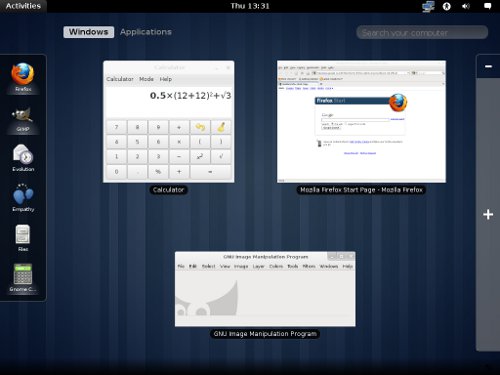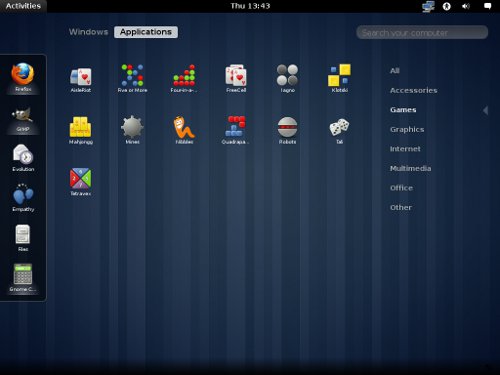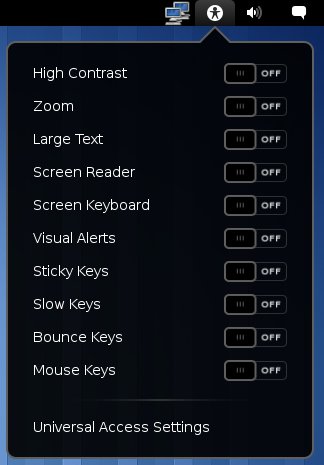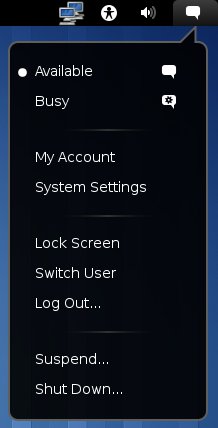GNOME 3.0 desktop is designed in such a way that it can run on a variety of modern computing devices including PCs, tablets, cell phones, and what not. The defining technology for GNOME 3.0 user experience is the GNOME Shell.
GNOME Shell takes advantage of the capabilities of modern graphics hardware and introduces a unique user interface that makes computing simple for the lay person.
For example, try moving your mouse pointer to the top left corner of your screen and GNOME Shell puts you into the Activities Overview. The Activities Overview helps you open new applications and also switch between open windows.
In fact, you can easily open any application or manage open app windows from within GNOME 3.0 with no more than two clicks of your mouse. In many cases, a single click of your mouse would suffice.
GNOME 3.0 desktop has an integrated search facility some what similar in functionality to Gnome Do that allows you to launch applications, switch windows, and open recent documents and settings. Why, you can even search Wikipedia and Google from within GNOME 3.0 Activities view.
Here are a couple of GNOME 3.0 screenshots -



Integrated Calendar & Task Scheduler

Accessibility settings at your finger tips

The features mentioned above merely scratch the surface of what GNOME 3.0 has to offer. For the full set of features read the GNOME 3.0 release notes.
After trying out a GNOME 3 Live CD, I feel the GNOME team has indeed struck gold. The three years' of planning and development culminating in the GNOME 3 release lives up to its promises of providing a distraction free, productive computing experience to the end user.
You can download Live CDs of GNOME 3 from its website. OpenSUSE and Fedora images have been provided.


